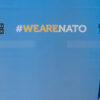For decades the Baltic States and Poland have been the most vocal advocates of the threat posed by Russia’s aggressive foreign policy to the peace and stability of Eastern Europe and beyond. Following the Russian invasion of Ukraine there is a feeling that testing NATO’s resolve in the Baltic states and Poland may well be the next move. Thus, they are convinced that a greater NATO presence and enablers capable of deterring and, if necessary, defending the area are urgently needed.
History taught Lithuania, Latvia and Estonia the lessons of living in a tough neighbourhood with Russia. After gaining independence in the 1990s they focused their foreign and security policies on two main goals: joining both the EU and NATO. First, these two goals determined their geopolitical will to become an official part of the vital Western alliances, showing a willingness to follow the Western way of life and its values. Secondly, they had practical implications as they helped build a framework for economic development and offered official security guarantees from the West. To become members of NATO, the Baltic states not only reformed and strengthened their armed forces (with material and expert support from the Nordic countries) but also contributed to NATO missions in many of the period’s hotspots, such as Bosnia and Hercegovina and Iraq.
The Baltic Sea should become a NATO fortress. This would require more enhanced cooperation followed by the prompt membership of Finland and Sweden.
The greater or lesser but constant physical menace from Russia felt by the Baltic States has led them to mainly focus on conventional threats as they are both real and existential. Yet the shifts in modern warfare witnessed in Ukraine starting from 2014 also require focusing on hybrid threats, as they can be used during peacetime or as a preparation prior to aggression.
Given Russia’s regional military advantage, aggressive rhetoric against the Baltic States and possibly permanent Russian troop deployments in Belarus, it is essential for NATO to enhance its defensive capabilities in the region, moving away from an enhanced forward presence towards forward defence. This is the crucial reason why the Baltic States are focused on more practical military solutions (to be described in this article) during the upcoming NATO Strategic Concept and NATO Summit in Madrid.
Real defence capabilities in the Baltic States
At the 2016 NATO Summit in Warsaw, in response to the increased instability and insecurity along NATO’s periphery, the Allied heads of state and government agreed to enhance the Alliance’s forward presence in the east and south-east. This enhanced forward presence (eFP) was first established in 2017, creating four multinational battalion-size battlegroups in Estonia, Latvia, Lithuania and Poland on a rotational basis.
Following Russia’s overt aggression against Ukraine, the Allies sent ships, planes and troops to NATO territory in eastern and south-eastern Europe, reinforcing its deterrence and defence posture. However, most of these extra deployments are not a long-term decision; some of them (such as US reinforcements) have a bilateral basis. The deteriorating situation requires a long-term solution for the security of the Baltic States. One of the critical hopes in the three capitals is to expand the NATO eFP to brigade-size battlegroups and change the air-policing mission to an air-defence one.
The need for a more significant and better armed NATO military presence in the Baltic States has been a protracted debate. In 2015 all three Baltic States asked NATO to deploy the brigade-size battlegroups. According to the Lithuanian Minister of Defence, Arvydas Anušauskas, there are now positive signs from Germany that the NATO Forward Presence Battalion in Lithuania could become a brigade in the new geopolitical reality.
It will be interesting to see how all the other NATO Allies leading, or contributing to, eFP battlegroups will react to the possible expansion to brigade size. The specific number of troops to make up the new brigades is as yet unclear, but it is safe to guess that they may be double or three times the current size. This will require a show of political will at the Madrid Summit and the lengthy process of approval in each national parliament of a significant increase in their military presence in foreign countries.
In its last strategic concept, NATO focused more on problems like terrorism rather than on conventional warfare, reforming its military structure and procuring lighter military equipment. After the Russian aggression in Ukraine there is much speculation in the media about the lack of specific military equipment in NATO countries. Their lack could also be detrimental to strengthening NATO’s eastern flank on a more long-term basis.
To strengthen the security of the Baltic States more heavy equipment, such as tanks and heavy artillery, must be deployed in the region. This could be a helpful deterrence measure against Russia and increase the capabilities of NATO forces in the area as all three Baltic States have either mechanised or motorised brigades. All of these combat-ready military capabilities must be formed in NATO countries at a national level and only then can they be sent to the Baltics. It is to be hoped that the current trend in rising military spending will soon cover all the most urgent gaps.
Air defence is a crucial gap for the security of the Baltic States. They lack fighter jets and long-range air-defence systems, so they are heavily dependent on NATO air policing missions (despite efforts to strengthen their mid-range air defence capabilities). While the air policing concept might have been efficient when it was created, it should now focus more on integrated air defence. First, NATO fighter jets in the Baltics should be consistently armed and ready to engage if needed. Secondly, NATO should think about deploying extra surface-based air defence (especially long-range) capabilities that can be integrated with local air defence infrastructures and capabilities and strengthen air defence capabilities by expanding eFP forces to the brigade level. Furthermore, NATO’s presence in the air could be reinforced by having high-readiness airpower capabilities assigned to be deployed in the Baltic States in a crisis or conflict.
The Suwalki Gap, an approximately 100-kilometre-wide land border between Lithuania and Poland, is the only land connection between the Baltic States and their NATO Allies, surrounded by the heavily militarised Russian Kaliningrad Oblast and by Belarus. As Lithuania is discussing the possible fortification of its border next to the Suwalki Gap, the NATO Allies could also contribute to strengthening the Alliance’s Achilles heel in the region. As Lithuania can complete the military fortification processes by itself, there is a need for closer NATO-EU cooperation in improving civil infrastructure (railways, roads, etc) that could also be used by NATO Allies if needed.[1] Also, with the Russian military build-up seen in Belarus, creative military solutions such as a multinational battalion focused on defending the Suwalki gap could be considered.
The Baltic Sea should become a NATO fortress. This would require more enhanced cooperation followed by the prompt membership of Finland and Sweden. Securing Gotland Island is a vital interest for Lithuania in the Baltic Sea. A possible attack on it could leave the Baltic States fully covered by hostile air and sea defence systems. Swedish and Finnish membership of NATO would result in two regional military powers making official security commitments to each other, making it possible for NATO to create a more integrated security system in the Baltic Sea region. Regional maritime command, defensive plans and the assignment of necessary forces could also be considered useful tools in strengthening resilience in the Baltic Sea. All these proposals could and should be discussed with Sweden and Finland even if they do not join NATO, as their maritime presence is crucial for the security of the Baltic States.
Be ready for the hybrid threats of both today and tomorrow
Hybrid threats are another field in which Lithuania has both experience to share and expectations for the upcoming NATO Strategic Concept. In the current security circumstances, three critical areas of hybrid threats can be highlighted as the most important from Vilnius’s perspective.
First, the latest developments in Ukraine show that the capabilities to defend critical physical and electronic infrastructure from cyber-attacks are crucial. Changes in our everyday lives and the rapidly changing technologies also call for a constant evolution in how we perceive cyber threats and counter them. According to the Lithuanian National Threat Assessment of 2021, the cyber capabilities of Russia and other hostile countries likely became the primary tool for information gathering due to the changes caused by the pandemic.
NATO should continue strengthening its cyber security capabilities in the military field and form companies for closer cooperation with the private sector in the more critical infrastructures. Together with abilities to detect and halt hostile cyber activities, NATO should continue developing retaliatory capabilities to boost cooperation with the EU to create a common civil cybersecurity infrastructure and procedures. Also, military-civic cooperation can be enhanced through educational programmes focused on security in cyberspace, with NATO structures participating in co-creating tools to identify threats in cyberspace alongside educational institutions, private entities and initiatives.
Secondly, NATO must effectively debunk disinformation and propaganda campaigns as informational space becomes a new high-intensity hybrid war domain. On Twitter, a relatively unpopular social network in Lithuania, a possible bot attack was spotted in the middle of January. Disinformation and cyber analyst Markian Kuzmowycz said that around 40 fake profiles wrote some 2,000 messages to spread panic in the Baltic States. Sophisticated fake Twitter users wrote that Russian diplomats are leaving the Baltic States. The critical message spread by these bots was that the Kremlin had decided to order the Russian diplomatic missions in the Baltic States to leave because of the continuing US efforts to destabilise the countries and the threat to the security of the Estonian, Lithuanian and Latvian populations.
In general, bot farm attacks like these are becoming quite common, but what is new is that they are directed against the Baltic States rather than Ukraine or the US. Because of the unpopularity of Twitter in the Baltic States, it is also possible that the target audience is not only Baltic but also Western. At that moment, with the danger of war in Ukraine growing, this bot attack aimed to sow panic. Also, its secondary goal was undoubtedly to spread mistrust about the NATO Allies as incapable of providing security to the Baltic States.
Attacks like these prove that there are still opportunities for closer NATO cooperation with the private sector to create better algorithms and funding initiatives to debunk disinformation and develop simple tools to detect, discredit and report disinformation and propaganda campaigns on the social media networks or other news outlets. NATO should enforce its strategic communication capabilities and be able to react and debunk and counter disinformation attacks against the Alliance, its structures and forces on a local, national and international level. This can only be done efficiently in a wide range of cooperation issues with private entities and initiatives.
The third priority is an increased political will to keep critical infrastructure in the right hands. A rigorous overview has been imposed on nearly all investments in core infrastructure projects in Lithuania. For instance, only a few months ago the National Commission for the Protection of Objects Important for Ensuring National Security and the Government halted the transit of fertilisers from Belarus through Lithuania as it was viewed as a threat to national security.
NATO must effectively debunk disinformation and propaganda campaigns as informational space becomes a new high-intensity hybrid war domain.
Why is all this being done? The position of Lithuania’s state institutions is that all critical state infrastructure, both military and civilian, must be secured against possible threats for at least two main reasons: (1) to secure detailed technical information about vital infrastructure in Lithuania from possibly hostile foreign actors; and (2) to secure the Lithuanian economy from possible economic influences that might be used as leverage to pressure Lithuania to seek, support or stay mute regarding specific policies by foreign actors in control of critical infrastructure. An improved security of investments in critical infrastructure, following the Lithuanian example, could also be discussed in the NATO format.
Conclusions
The Baltic States are not only asking NATO to contribute to its security but are also heavily investing in their own security and host nation capabilities. Lithuania, Latvia and Estonia will spend up to –and over– 2.5% of their GDP on defence, being at the head of NATO in this respect. Host nation capabilities are also being provided with plans to expand even further, with Lithuania aiming to invest €40 million this year alone).
The new NATO Strategic Concept, as well as other decisions in Madrid, should reflect the Russian threat to the Alliance’s eastern flank, as well as the constant hybrid threats posed to the Allies. Capacities to defend the Baltic States should be one of the key priorities. This will not only reassure the Baltic countries of NATO’s commitment to their defence but will also increase stability in the region, deterring Russia from resorting to provocations.
[1] For more on the question of military mobility from the Lithuanian perspective, see Gintaras Bagdonas, “Military mobility development: the situation now and the challenges ahead”.
Image: Flag of Lithuania at the embassy in Washington D.C (US). Photo: Mr.TinMD (CC BY 2.0).



